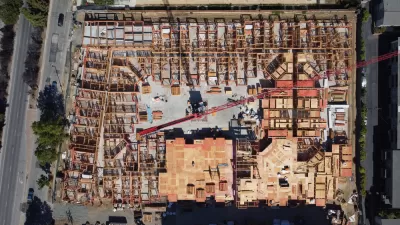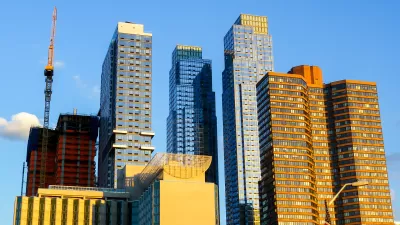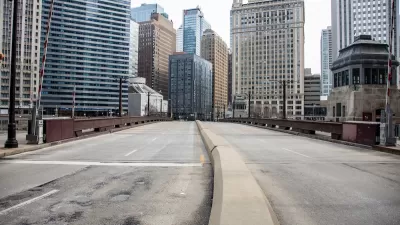Businesses that traditionally serve commuters have had to make adjustments to stay in business as remote work empties out central business districts.

Small businesses in downtowns across the country are struggling to figure out their future as the pandemic wears on and a return to the traditional office seems further and further away, report Mae Anderson and Tom Krisher. "[N]ow that many companies have postponed plans to bring workers back due to a surging number of COVID-19 cases spurred by the Delta variant, downtown businesses are reckoning with the fact that adjustments made on the fly could well become permanent."
"In Lower Manhattan, 224 businesses closed in 2020 and 2021, according to the Alliance for Downtown New York. About 100 have opened." Lyle Richardson, chief operating officer for restaurant operator A. Marshall Hospitality in Nashville and board member for the Tennessee Hospitality Association, says "he has seen the city’s restaurant industry ravaged by the coronavirus epidemic and estimates that hundreds of restaurants have closed."
Some businesses are seeing a shift in customers. At one restaurant in Manhattan, "[t]he clientele has changed from workers to younger people and families from nearby Battery Park City." According to Jorge Guzman, an assistant professor of business management at Columbia University, "the shift of economic activity away from downtowns is likely to last" as entrepreneurs seek cheaper rents and new customer bases. Meanwhile, business owners warily prepare for the fall as new COVID-19 variants continue to disrupt daily life, using lessons learned so far to adjust their business models and stay afloat.
FULL STORY: Downtown businesses in the U.S. and overseas adapt to survive as COVID means fewer office workers

Manufactured Crisis: Losing the Nation’s Largest Source of Unsubsidized Affordable Housing
Manufactured housing communities have long been an affordable housing option for millions of people living in the U.S., but that affordability is disappearing rapidly. How did we get here?

Americans May Be Stuck — But Why?
Americans are moving a lot less than they once did, and that is a problem. While Yoni Applebaum, in his highly-publicized article Stuck, gets the reasons badly wrong, it's still important to ask: why are we moving so much less than before?

Using Old Oil and Gas Wells for Green Energy Storage
Penn State researchers have found that repurposing abandoned oil and gas wells for geothermal-assisted compressed-air energy storage can boost efficiency, reduce environmental risks, and support clean energy and job transitions.

Updating LA’s Tree Rules Could Bring More Shade to Underserved Neighborhoods
A new USC study finds that relaxing Los Angeles’ outdated tree planting guidelines could significantly expand urban tree canopy and reduce shade disparities in lower-income neighborhoods, though infrastructure investments are also needed.

California's Canal Solar Projects Aim to Conserve Resources and Expand Clean Energy
California’s Project Nexus has begun generating electricity from solar panels installed over irrigation canals, with researchers and state agencies exploring statewide expansion to conserve water and boost clean energy production.

HHS Staff Cuts Gut Energy Assistance Program
The full staff of a federal program that distributes heating and cooling assistance for low-income families was laid off, jeopardizing the program’s operations.
Urban Design for Planners 1: Software Tools
This six-course series explores essential urban design concepts using open source software and equips planners with the tools they need to participate fully in the urban design process.
Planning for Universal Design
Learn the tools for implementing Universal Design in planning regulations.
Heyer Gruel & Associates PA
City of Moreno Valley
Institute for Housing and Urban Development Studies (IHS)
City of Grandview
Harvard GSD Executive Education
Salt Lake City
NYU Wagner Graduate School of Public Service
City of Cambridge, Maryland





























